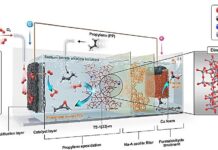The James Webb Space Telescope has produced a remarkable new image of the Red Spider Nebula (NGC 6537), showcasing intricate details previously obscured from view. This large planetary nebula, located approximately 12,420 light-years away in the constellation Sagittarius, offers a glimpse into the later stages of a star’s life and the dramatic processes that shape these celestial objects.
What is the Red Spider Nebula?
The Red Spider Nebula is a planetary nebula, a relatively short-lived phenomenon that occurs when a star similar to our Sun nears the end of its existence. Here’s what happens :
- Red Giant Phase: The star expands and cools, becoming a red giant.
- Outer Layers Shed: The star gently sheds its outer layers into space.
- Central Star Exposed: A very hot core, called a white dwarf, is left behind and begins to heat the ejected gas.
- Ionization and Glow: Ultraviolet radiation from the central star ionizes the ejected gas, causing it to glow vividly.
This final phase is fleeting, lasting only a few tens of thousands of years—a mere blink of an eye in cosmic timescales.
A New Perspective with Webb
While previous telescopes like the Hubble Space Telescope have captured images of the Red Spider Nebula, the James Webb Space Telescope’s Near-InfraRed Camera (NIRCam) has provided an unprecedented view, revealing critical details.
Hubble typically depicts the central star as faint and blue, but Webb’s ability to observe in the near-infrared has exposed a shroud of hot dust circling the star. This dust likely forms a disk-like structure.
Unraveling the Nebula’s Shape
The Red Spider Nebula’s distinctive hourglass shape – a narrow waist with wide outflows – is a characteristic feature seen in other planetary nebulae, such as the Butterfly Nebula. Astronomers speculate that a companion star might be playing a role in sculpting this unique form.
A stellar companion could explain the nebula’s shape, including its characteristic narrow waist and wide outflows.
Key Features Revealed by Webb
Webb’s new observations have highlighted several fascinating features:
- “Legs” of the Spider: The full extent of the nebula’s outer lobes, which resemble the “legs” of a spider, are now visible. These lobes, traced by light emitted from H2 molecules, are closed, bubble-like structures extending roughly three light-years.
- Bubble Formation: Gas outflow from the central star has inflated these massive bubbles over thousands of years.
- Active Jets: Webb’s observations also show gas actively jetting out from the nebula’s center.
- Ionized Iron Feature: An elongated purple “S” shape is visible, marking where a fast-moving jet of ionized iron atoms has collided with previously ejected material, sculpting the nebula’s rippling structure.
These new observations provide invaluable insights into the complex interplay of stellar evolution, gas dynamics, and the creation of some of the most beautiful and transient objects in the universe. The ongoing exploration of nebulae like the Red Spider Nebula with the James Webb Space Telescope promises to further refine our understanding of the cosmos and the lifecycle of stars.


































